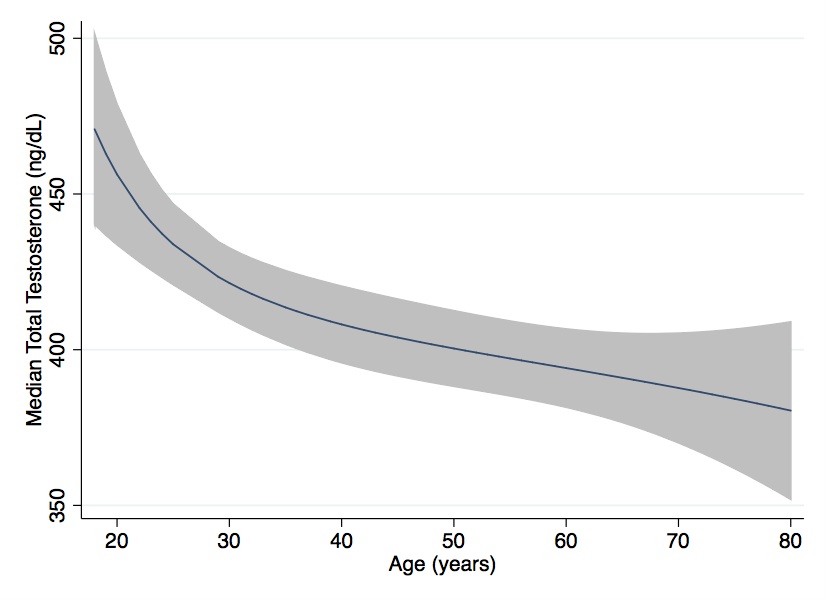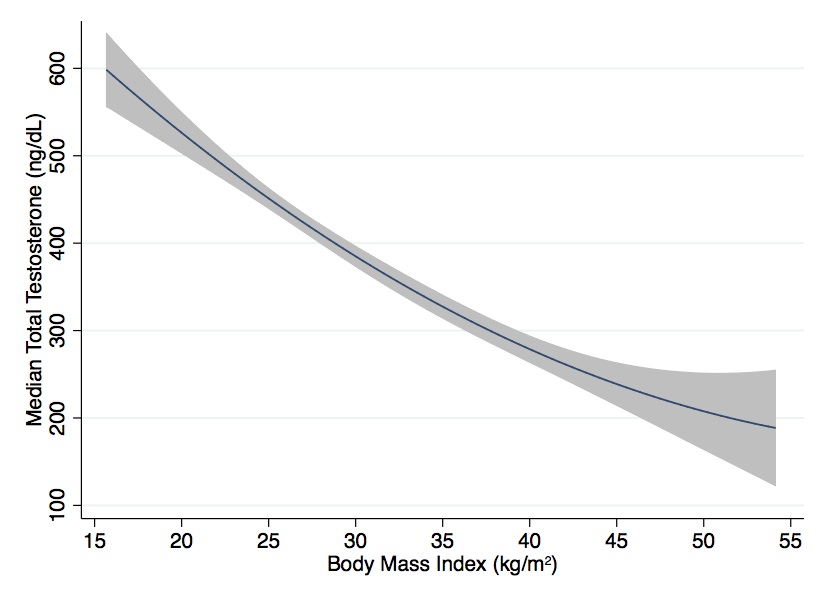|
Back to 2014 Annual Meeting Abstracts
Prevalence and Predictors for Testosterone Deficiency in the United States
Julien Dagenais, MD1, Natalia Leva, BS2, Jeffrey J. Leow, MBBS, MPH1, Steven L. Chang, MD, MS1.
1Brigham and Women's Hospital, Boston, MA, USA, 2Stanford University Hospital, Stanford, CA, USA.
INTRODUCTION AND OBJECTIVES
Testosterone deficiency is associated with decrement in the quality of life due to a constellation of symptoms including fatigue, decreased libido, erectile dysfunction, osteoporosis and depression. Prior studies suggest that testosterone deficiency is widespread in the United States and but there are limited population-based data to define the true prevalence of this disease. In the current study, we use the National Health and Nutrition Examination Survey (NHANES), a population-based cohort, to define the prevalence and predictors for testosterone deficiency among adult men in the United States.
METHODS
We analyzed cross-sectional data on men 18 years of age and older from the 2011-2012 cycle of NHANES. Data was collected on baseline socio-demographic factors, medical history, physical exam, and laboratory values. To avoid the potential biases of missing data, we employed multiple imputation. We accounted for the NHANES complex survey design to yield a nationally representative study cohort. We constructed univariable as well as multivariable quantile and logistic regression models to describe our study cohort and evaluate the association among demographics, socioeconomics, and clinical history with serum testosterone level as well as the independent predictors for testosterone deficiency, defined as a total testosterone level <300 ng/mL.
RESULTS
We found that testosterone deficiency affects an estimated 31.2 million men in the United States. Increasing age and body mass index (BMI) were both strongly inversely related to the median serum total testosterone level (Fig 2a,2b). Adjusted analysis with a multivariable logistic regression model shows that the predictors for testosterone deficiency include increasing age (vs. 18-34 years: 35-54 years, OR 1.4, p=0.03), marriage (vs. unmarried, OR 1.25, p=0.04), increasing BMI (vs. <25, 25-29.9, OR 2.1, p<0.0001; 30-34.9, OR 2.3, p<0.0001; ≥35, OR 7.2, p<0.0001), and metabolic syndrome (OR 1.7, p=0.003). Increasing alcohol use was associated with a lower odds for testosterone deficiency (OR 0.98, p=0.02) while race, education, household income, insurance, cardiovascular disease, hypercholesterolemia, chronic kidney disease, and chronic obstructive pulmonary disease were unrelated to the presence of testosterone deficiency.
CONCLUSIONS
Testosterone deficiency is widespread among adult men in the United States. It disproportionately affects middle-aged married men with elevated BMI and metabolic syndrome. BMI is the strongest predictor for testosterone deficiency in our adjusted analysis. Our results suggest that addressing the obesity epidemic represents the most important approach to reducing the prevalence of testosterone deficiency in the United States.
 
Back to 2014 Annual Meeting Abstracts
|

|

